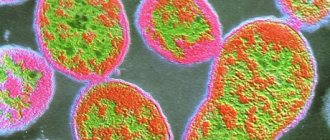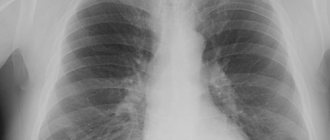Share on social media networks:
Embryo implantation during IVF is the final process of the entire in vitro fertilization protocol. The result of the entire procedure depends on how accurately the transplant is performed. For implantation, embryos obtained as a result of artificial insemination are used. The development of pregnancy after IVF is influenced by various factors, including the time of embryo transfer and the body’s readiness to accept them. The process of embryo implantation leaves behind many questions, which we will try to sort out in this article.
What is embryo implantation
The egg matures in the follicle. At a certain point, the follicle membrane ruptures, the oocyte enters the abdominal cavity, then into the fallopian tube. If unprotected sexual intercourse occurs, sperm enter the female genital tract and begin moving through the tubes. There, one of them meets the egg, dissolves its membrane and fertilizes it.
Then the process of division begins, during which the number of cells constantly doubles. At the same time, the zygote moves along the fallopian tube towards the uterus. Its cells form the inner layer - the embryoblast, and the outer layer - the trophoblast. Due to the trophoblast, during implantation after conception, the embryo attaches to the wall of the uterus, growing into the endometrium, contacting the mother’s body.
This process also occurs in stages. First, the embryo adheres to the mucous membrane - this is the adhesion stage. Then, villi are formed from the trophoblast, which grow into the endometrium, releasing substances that soften and destroy the inner lining of the uterus: blood vessels, connective tissue. Thus, a recess or depression is formed on the surface of the uterus, into which the embryo is completely immersed - this is an invasion.
The trophoblast villi subsequently form the chorion, which provides nutrients and oxygen and releases hormones. Thanks to this, the fetus receives everything it needs for growth and development.
Violations of the embryo implantation process
In some cases, the fertilized egg becomes ready to be implanted into the uterus earlier than necessary. Early implantation of the embryo occurs, in most cases ending in tubal pregnancy. The embryo is freed from the outer cells and attaches to the wall of the tube, without having time to pass into the uterus. This usually occurs 4-5 days after fertilization or 6-7 days after ovulation.
As the embryo develops, it supports the existence of the corpus luteum of pregnancy in the ovary. Then, due to the thin walls of the tube, the destruction of its vessels by the growing fertilized egg, the latter is rejected, the level of hormones drops, the mucous membrane of the uterus separates and comes out.
If the embryo still managed to get into the uterus, its walls are not yet ready to accept it, so it is expelled out, and pregnancy does not occur.
Late implantation is observed 10 or more days after fertilization and is often accompanied by moderate bleeding, which women mistake for regular menstruation. An increase in hCG levels helps diagnose pregnancy with late embryo implantation. Late implantation of the embryo can be observed during in vitro fertilization.
Despite good ovarian activity and regular fertilization of eggs, embryos may not implant into the uterine wall, resulting in infertility. Why embryo implantation does not occur:
- the thickness of the uterine mucosa is too thick (more than 13 mm);
- low levels of progesterone in the blood, which is necessary to delay menstruation and maintain pregnancy (read about the causes of deficiency below);
- lack of nutrients in the blood and, accordingly, in the endometrium;
- genetic disorders that cause the inability of cells to divide and the death of the embryo at an early stage;
- disorders of hemostasis, that is, increased blood clotting, leading to poor supply of nutrients to the implanting embryo;
- malformations of the uterus, for example, synechiae (intracavitary adhesions);
- fragmentation of sperm DNA, leading to the impossibility of normal division of the fertilized egg.
After IVF, the implantation of the embryo does not occur for the following reasons:
- endometrial pathology (consequences of endometritis, polyps);
- hormonal pathology in the mother;
- woman's age over 40 years;
- transfer of a previously frozen embryo;
- genetic abnormalities of the embryo that make its development impossible.
In general, we can say that disturbances in the attachment of the blastocyst are caused by changes in the embryo that are incompatible with its further development, or severe damage to the uterine wall, which will subsequently lead to the impossibility of adequate nutrition of the fetus.
The reasons why there is a decrease in progesterone, the hormone that supports pregnancy:
- premenopause;
- ovarian pathology – chronic oophoritis, endometriosis, cyst, tumor;
- intense physical activity;
- diet or fasting;
- prolonged stress, leading to disruption of the regulation of the entire hormonal system of a woman through its effect on the brain, hypothalamus and pituitary gland;
- diseases of the pituitary gland, accompanied by insufficient production of gonadotropic hormone.
When does embryo implantation occur? Deadlines
From fertilization to attachment it takes approximately 8-9 days. The breakdown by stages is as follows:
- Conception is possible within 1 day after ovulation. On average, ovulation occurs on the 14th day of the menstrual cycle (the figure is given for a 28-day cycle). If your cycle is shorter or longer, you need to calculate the cherished date individually using tests, the calendar method or ultrasound folliculometry;
- Within 3 to 5 days after conception, the zygote moves along the fallopian tube towards the uterus;
- Implantation begins on days 6–7 after conception, which lasts almost 2 days.
It turns out that, on average, attachment can occur on days 25–27 of the menstrual cycle.
Can there be deviations and on what day after conception does implantation occur if the cycle is not 28 days? Deadlines may vary. There is early implantation - within a week after ovulation, and late - after the 10th day after. They are considered variants of the norm. But you need to take into account some nuances.
For example, if implantation of the embryo after conception occurred on day 6, by this time the endometrium may be “immature” and thin. As a result, the embryo is not completely immersed in the endometrium, which is why there is a high probability of abortion and fetoplacental insufficiency. This deviation most often occurs with excess progesterone production.
And if the embryo enters the uterine cavity too late, the inner lining undergoes some changes, which can also lead to miscarriage in the first trimester. The reason for the delay in the advancement of the embryo may be pathology of the fallopian tubes, when the contractions of the walls are too weak, adhesions and narrowing of the organ, or a failure in the division of cells of the embryo.
Reasons for unsuccessful implantation
Implantation and introduction of the embryo into the uterus lasts about two weeks, so in the period up to 6 weeks of pregnancy there is a considerable risk of failure. Often this happens even before the delay, and the woman does not know that she is pregnant, and the fertilized egg comes out along with her period.
Causes:
- very dense capsule of the fertilized egg;
- genetic and other abnormalities in the development of the embryo;
- endometrial damage, inflammatory and infectious diseases of the uterus;
- hormonal deficiency.
Attachment of the fertilized egg in the uterus can occur in different parts of it - at the bottom of the uterus, along the anterior, posterior wall. But if the fertilized egg implants low, placenta previa may develop in the future.
Symptoms
There are no signs that would indicate with 100% certainty that an embryo has been implanted. But judging by the reviews of many women, they physically felt the changes occurring in the body at this moment. Obviously, these sensations were associated with hormonal changes, which cause a cascade of changes in the body.
Typical subjective symptoms of implantation after conception are as follows:
- pain in the lower abdomen - pulling, twisting, accompanied by increased pulsation;
- weakness, malaise, vomiting, nausea, dizziness;
- a slight increase in temperature to 37.5 degrees;
- emotional instability, irritability;
- change in taste.
There are also objective symptoms that are determined by the doctor during examination. We'll talk about them next.
Basal temperature
Basal temperature - the temperature in the rectal cavity, which is measured in the morning, depends on the level of hormones. During the cycle its values change. So, in the first phase, when the follicle matures under the influence of estrogens, the thermometer shows numbers up to 36.4 degrees. Before ovulation, the temperature becomes lower - 36.2 degrees.
After the follicle ruptures, a corpus luteum forms in its place - a temporary structure that synthesizes progesterone (pregnancy hormone). The hormone is needed for the maturation of the endometrium. In addition, it increases the temperature to 37.0 - 37.2 degrees. If conception occurs, and after it implantation of the embryo, progesterone levels decrease briefly. On the temperature curve you will see a sharp drop: around 36.4 - 36.6 degrees. Then the concentration of progesterone increases again, and the basal temperature remains within 37.0 degrees throughout pregnancy.
These changes in rectal temperature are characteristic only of normal pregnancy. If a woman has hormonal disorders, the general body temperature is increased due to the inflammatory process, temperature fluctuations cannot be considered a symptom of implantation after conception.
Bleeding
Implantation bleeding is caused by damage to small blood vessels during the ingrowth of trophoblast filaments into the endometrium. Passes within two days. The amount of blood loss is small: pinkish spots simply appear on the underwear. A woman may not even notice the discharge.
There is no heavy bleeding during embryo implantation. If you see that the amount of discharge is significant, consult a doctor. It is necessary to exclude uterine bleeding, bleeding disorders and other conditions that require adequate therapy.
All of the listed symptoms, both objective and subjective, must be assessed in a comprehensive manner. For example, an increase in basal temperature alone, or only nausea and weakness are not evidence of embryo implantation after conception.
Changes in the breast and cervix
Human chorionic gonadotropin, which begins to be released after conception and implantation of the embryo, affects the condition of the mammary glands. It stimulates the development of glandular tissue of the mammary glands, thus preparing the body for lactation. The breasts hurt, the nipples darken, and the spider veins become visible.
The blood supply to the reproductive organs increases after conception. Therefore, the cervix becomes soft and changes color from pink to bluish. Upon examination, the doctor will determine its low location, which is associated with an increase in the size of the uterus.
Implantation during IVF
With IVF, fertilization is carried out outside the woman’s body: in vitro in a laboratory setting. In the first stage, doctors stimulate ovulation to produce more eggs. Then the ovaries are punctured and oocytes are collected and fertilized with the sperm of the husband or donor. When the embryos reach a certain degree of maturity, 1 or 2 of them are transferred into the uterine cavity.
Embryo implantation in an IVF cycle occurs differently than during natural conception, and the duration of the process itself is longer than 40 hours. Attachment of 3-day embryos is possible no earlier than 3 days after transfer. If cryopreserved embryos are used, the process takes even longer. But 5-day-old material can grow in within a few hours. At the same time, the probability of successful replanting is also higher in older embryos.
Direct implantation of the embryo occurs in the same way as during natural conception. Since in women who decide to undergo artificial insemination, the problem is often endometrial pathology, it is important to properly prepare for the protocol. Both too thick and too thin are undesirable. Therefore, the woman undergoes an examination, during which the condition of the reproductive organs is determined.
If the inner lining of the uterus is thinner than necessary for implantation of the embryo after conception, it is increased with the help of hormonal drugs. All processes must take place synchronously so that by the time of transplantation the shell is of the required thickness.
Implantation of three- and five-day embryos
When undergoing IVF, a woman can be implanted with both three-day and five-day-old embryos. It is at this time that they best take root in the uterus. Three-day zygotes already have their own genetic material and are better attached to the mucosa than earlier embryos.
On day 5, the embryo is already considered a fertilized egg and is maximally ready for implantation. The success rate for transferring a five-day embryo is about 50-55%, and 40-45% for a three-day embryo.
If the number of zygotes formed is small (no more than 2-4), the tactic of transferring three-day embryos is chosen. If enough zygotes were formed, but most of them died in the first 2 days, then the embryos are also transferred on the 3rd day of their formation.
In this case, some of them are left to “grow” for up to 5 days and then they are also replanted. It is believed that on the 5th day the fertilized egg is maximally viable and close to the state in which natural conception occurs.
Why is the attachment not happening?
In some cases, a couple conceives, but problems arise with embryo implantation. Let's look at what reasons can lead to this result.
Parental factors:
- endocrine pathology - thyroid disease, deficiency of female hormones, due to which the endometrium does not mature to the required thickness;
- immune pathology - as a result of a malfunction of the immune system, cells begin to perceive the embryo as a foreign body and attack it;
- defective endometrium - due to operations, injuries, curettage and termination of pregnancy;
- diseases of the uterus - endometritis, cysts, endometriosis, large fibroids, developmental abnormalities;
- concomitant pathology of the woman - diseases of the cardiovascular and nervous system, excess weight;
- bad habits - worsen the condition of the reproductive organs, reduce the quality of oocytes;
- defective sperm due to bad habits and concomitant diseases of the man.
Fruit factors:
- chromosomal abnormalities;
- slow development of the embryo.
Implantation of the embryo after conception depends on another structure - the pinopodia. These are outgrowths on the surface of the uterus to which the future fetus is directly attached. If the number of pinopodia decreases, attachment may not occur.
Abnormal attachment of the embryo
Implantation of an embryo outside the uterus is called an ectopic pregnancy. The embryo can attach to the wall of the fallopian tube (in most cases), to the surface of the ovaries and peritoneum, and in the cervix. The abnormal process is caused by hormonal disorders, inflammatory processes, tubal obstruction, and uterine masses.
The woman will complain of pain, the intensity of which increases as pregnancy progresses. Possible bleeding and weakness. To prevent rupture and internal bleeding, early diagnosis (pelvic ultrasound) and timely surgery are necessary.
On what day will the test show two lines?
On what day after implantation will the test show a positive result? Ideally, a home express method for diagnosing pregnancy should be carried out at least from the first day of missed menstruation. But modern ultra-sensitive tests make it possible to do this before the delay, already five to six days after the intended implantation.
However, the result of a laboratory blood test for hCG is much more reliable, because it is in the blood that the concentration of this hormone is higher than in the urine, especially in the early stages.
How to increase your chances of successful implantation
Thus, the process of fertilization and subsequent attachment involves:
- Egg - the egg needs to be healthy for ovulation to occur. In order for the oocyte to be of high quality, it is necessary to normalize the hormonal levels. In preparation for pregnancy, it is recommended to undergo an examination, based on the results of which the doctor will prescribe correction of the detected disorders. It is also important to eliminate other factors that can negatively affect embryo implantation: get rid of excess weight, remove strong coffee and tea, and canned foods from your diet. Instead, it is useful to eat more vegetables and fruits, greens. If necessary, the doctor may prescribe vitamin and mineral complexes. It is imperative to take folic acid (folates) to prevent developmental defects of the nervous system;
- Endometrium - the most important parameter is thickness. The endometrium matures and thickens under the influence of hormones. The moment when this membrane is most ready to “receive” the embryo is called the “implantation window.” Couples planning a pregnancy should determine the period that is favorable for them. It lasts no more than 2 days, which means that sexual contact should take place during this period. The condition of the inner lining is affected by the pathology of the reproductive system. If there are any violations, then it is necessary to undergo a course of treatment long before the expected conception;
- Pinopodia are protrusions of endometrial cells. The maximum number of these structures is observed in the middle of the cycle, that is, the time coincides with the “implantation window”. And they appear 6–9 days after ovulation and disappear after 1–2 days. To accurately determine pinopodia, the doctor may prescribe a biopsy - sampling the inner lining of the uterus and examining it;
- Spermatozoa - such qualities as viability, mobility, and quantity are important. The quality of sperm is affected by the general health of a man, past illnesses, surgeries, and injuries. Particular attention should be paid to mumps: a childhood infection affects the glandular organs, which include the testicles. Also, the future father needs to undergo examination, and if diseases are detected, receive timely treatment. Doctors recommend giving up bad habits, adjusting your lifestyle and nutrition. A man should also take folic acid to prevent abnormalities in the nervous system of the unborn baby.
What to do after sex?
With natural conception, there are no restrictions in sexual life. If artificial insemination was carried out, it is necessary to maintain sexual rest: both arousal and coitus with orgasm increase the tone of the uterus, which reduces the likelihood of successful implantation of the embryo. The expectant mother is recommended to have strict bed rest for the first 24 hours, then she can begin to slowly get up and move, being careful. She should not lift weights or make sudden movements.
Any medications during this period can be taken only after consultation with the doctor.
Will tests show pregnancy?
After the embryo attaches to the wall of the uterus, a chorion is formed, which synthesizes hCG - human chorionic gonadotropin. Pregnancy tests react specifically to them: a reagent is applied to the test strip, which turns color upon contact with the pregnancy hormone.
The fact is that the test can “catch” the hormone only from a certain level. At the very beginning of pregnancy, the concentration is very low, so the test will show a negative result. If you take the most sensitive test, it will reliably show a positive result 7 - 9 days after embryo implantation. Low-sensitivity test strips are informative only from the 14th day after fertilization.
How does conception occur?
In order for conception to occur, the participation of two gametes is necessary - a sperm and an egg. In the first half of the menstrual cycle, the oocyte matures - under the influence of the gonadotropin FSH, it is formed in the ovarian follicle. Around the middle of the cycle, usually on the 14th day, the dominant follicle ruptures and a mature egg is released. This phenomenon is called ovulation.
After leaving the ovarian follicle, the egg travels into the fallopian tube. If sexual intercourse occurred on this day or 2-3 days before, then some of the sperm could reach the fallopian tube. It is there that the male gametes wait for the female gamete to fuse with her and fertilize her.
If there are no sperm in the oviduct, the egg continues its movement, descends into the uterus, dies and comes out along with menstrual blood. If male gametes are present, then they all together begin to attack the surface shell of the egg - the corona radiata. One sperm cannot destroy it; the effort of several is required. However, only the one who first manages to reach the inner layer - the zona pellucida - fertilizes the oocyte.











